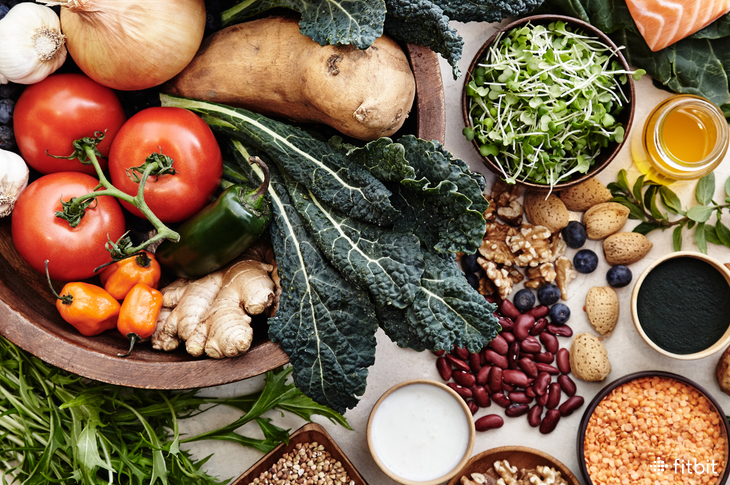
While modern-day cavemen are ripping into diets high in protein and fat, the experts are bringing it back to basics: They really just want you to eat your vegetables. And with good reason. “The case for plant-based eating is overwhelming,” says Michael Greger, M.D., author of How Not to Die. “It’s the only diet that’s ever been proven to help reverse heart disease in the majority of patients. Plus, it may treat, arrest, and help reverse other leading killers like high blood pressure and type 2 diabetes.” So not only can eating more plants help you slim down, it may even help you live longer—a recent study found that people who ate diets powered by plant protein were 10 percent less likely to die from any cause than carnivores.
But you don’t have to go full-on vegan to reap the rewards. A plant-based approach to healthy eating can be far more flexible, and it can even include a little meat. Intrigued? Here’s how to get more plants onto your plate, without overhauling your lifestyle.
Step 1: Pick a Plan that Works for You
Despite all the positive press, there’s no official definition for a plant-based diet. Vegan, vegetarian, pescatarian, and Mediterranean—the classic healthy eating plan that’s heavy on fruits and vegetables, and supported with beans, nuts, whole grains, seafood, and olive oil—could all qualify. To take more of a flexible approach, you could start eating smaller portions of animal protein, or alternate mostly vegetarian meals with the occasional splurge on grilled chicken or lean steak. Greger made it easy for his family by sticking a daily-dozen checklist on the fridge, which highlights all of the things he tries to fit into his routine, including cruciferous vegetables, flaxseed, and spices.
Step 2: Power Up On Plants
Even the most recent government guidelines support a diet consisting mostly of plant foods, recommending you eat roughly 2 cups of fruit and 3 cups of veggies per day. If eating that much produce seems daunting, ease into it with baby steps. You could start by filling half your grocery cart with plants, making your go-to snacks fruit and vegetable based, or getting veggies in at breakfast. Some people like to set a goal of a certain number of meatless meals a week. The point is: Enjoy more fruits, vegetables, legumes, and whole grains, so you can slowly downsize the amount of animal foods on your plate.
Step 3: Rethink Your Relationship with Meat
You don’t have to break up with meat; just use it sparingly. “Use meat as more of a flavoring or condiment instead of having a big hunk of it in the middle of your plate,” says Greger. Ways to do it? Swap in black beans or lentils for half the meat in Bolognese, tacos, or meatloaf. Try a chicken and veggie stir-fry instead of chicken teriyaki. Or substitute mushrooms for half the turkey in a burger. Diehard plant-based proponents also advise scaling back on eggs and dairy, even though the dietary guidelines include them as part of a healthy diet. “I consider eggs and dairy to be ‘minimize’ foods,” says Greger. “Because there are better options, especially legumes, which are the healthiest source of protein.”
Step 4: Stay Satisfied with Complex Carbs and Healthy Fats
Nobody wants to go hungry. So, if you’re in the habit of eating meat at every meal, you’ll want to find a satisfying replacement. That’s where complex carbs come in, like whole grains, beans, lentils, and sweet potatoes—foods that are digested slowly, so you’ll stay fuller longer. Think polenta with a mushroom ragout, veggie chili over quinoa, or lentil meatballs and spaghetti. Finally, don’t forget about fat. A little bit of healthy fat from nuts, seeds, avocados, and olive oil can help you feel full.
Step 5: Prioritize Healthy, Whole Foods
Don’t assume that all plant-based foods are healthy. Technically, French fries, white bread, and soda come from plants, but that doesn’t mean they’re good for you. No matter what, quality still counts. That means focusing on a lots of different kinds of whole, minimally processed eats so that you’ll get all the nutrients you need to feel your best.
The post What a Plant-Based Diet Really Looks Like appeared first on Fitbit Blog.
Source: Fitbit Blog
—